Inside Petra, Jordan : 5 Things the Locals Won't Tell You
It’s no surprise that Petra is Jordan’s most impressive and visited attraction…and if you do visit, like everyone else before you, you are bound to be overwhelmed by its natural beauty.
Exploring the site, from walking through narrow gorges to the amazing Petra Treasury, strolling colonnaded streets, exploring the ancient Royal Tombs, and climbing the spectacular Petra Monastery something that is hard to forget.
But like any world-famous site, there are a few things you need to know before you arrive to the Petra Archeological Park: the ‘Inside Petra’ story if you like, to make sure you don’t end up compromised, uncomfortable, or parted from excess cash. Here are five things we think you should know before you visit, that will stand you in good stead for the trip of a lifetime.
1. Set the price for horse/camel/donkey riding upfront
When you arrive inside the site of Petra, you’re going to have a choice to make - are you going to walk through the Siq Passageway or be driven? And not by a cab either - rather a horse-drawn carriage! As you continue on through the site, there will be other opportunities for you in the form of renting a donkey to take you up the Monastery’s steep stairs, or camel riding in front of the Treasury (it’s a very popular Instagram picture!).
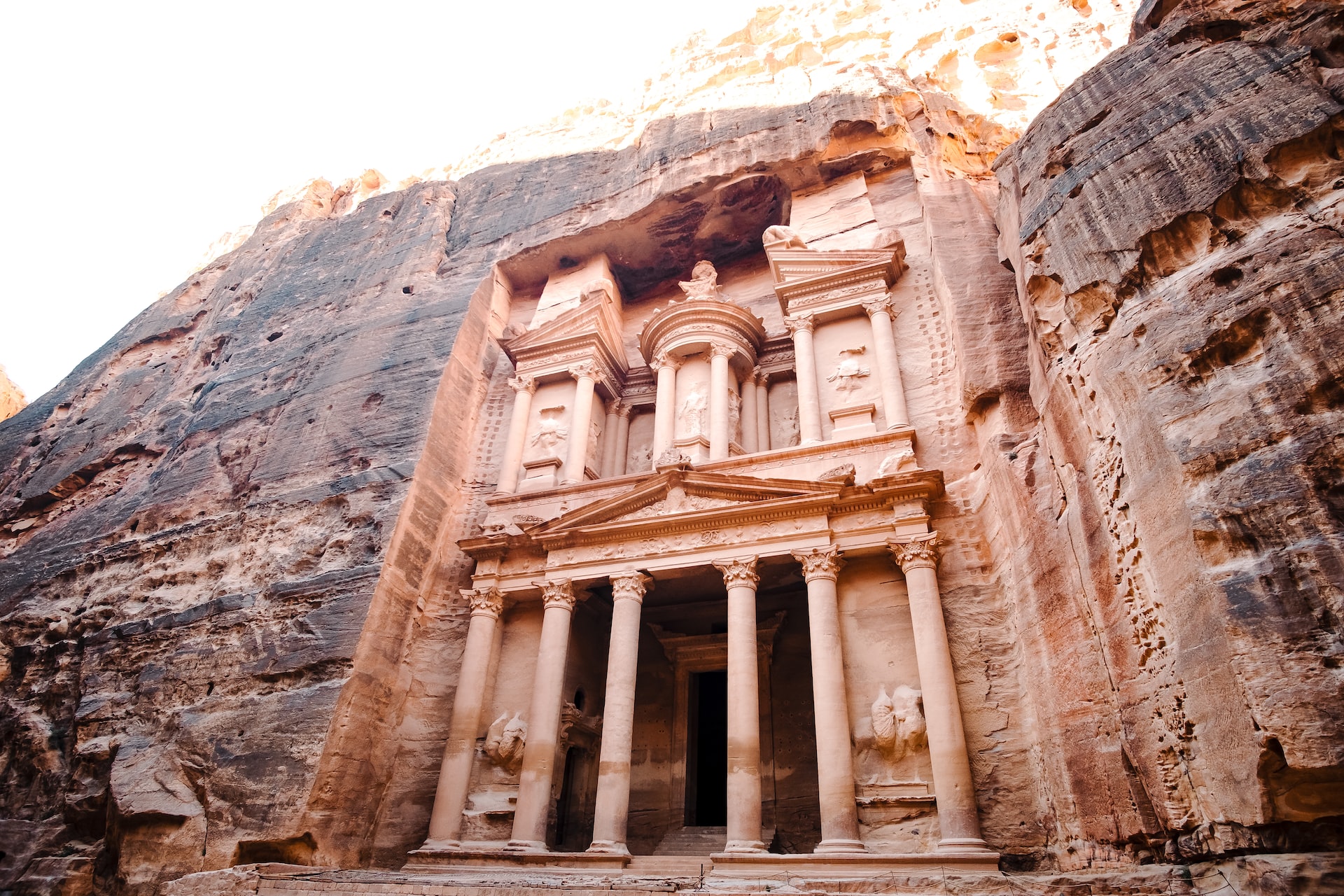 The Petra Treasury
The Petra Treasury
Putting aside the complicated question of how well these animals are treated by their owner (some better than others apparently), if you want to hire any of these services, it’s incredibly important to agree to the price upfront.
There are scams all over the world at tourist attractions, and the most well-known ones here are that you’re told that your carriage ride is included in the price, but then - later - hassled to give an enormous tip. The same thing happens when you’re offered a ‘free donkey ride’ the then presented with an eye-watering bill later.
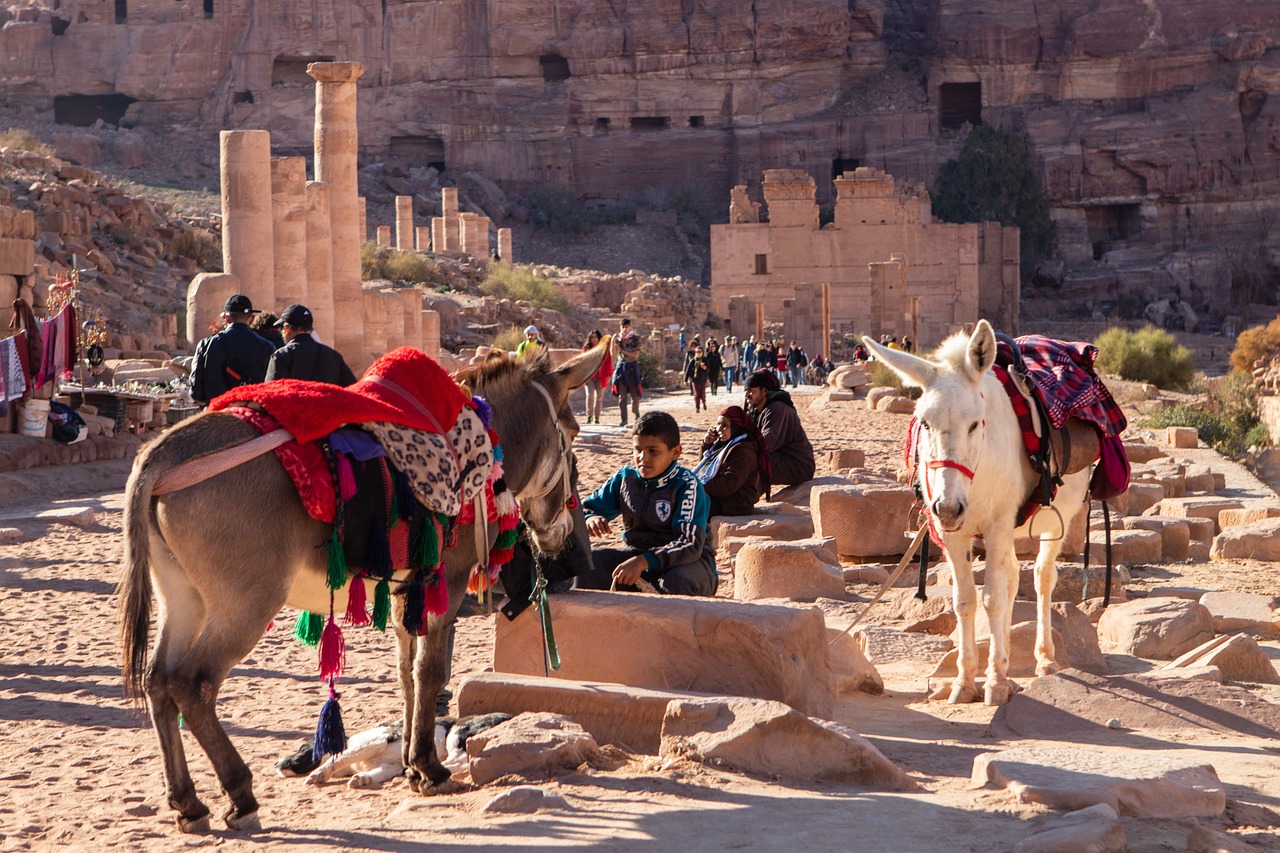 Donkey rides in Petra
Donkey rides in Petra
Always agree on a price beforehand and if you do encounter any problems with aggressive vendors, don’t hesitate to call upon one of the tourist police at the site.
2. Act in line with Jordan’s cultural norms
Whilst Jordan is a popular tourist destination for Westerners, and quite progressive by Middle Eastern standards, it’s still important to remember that it remains quite conservative, socially and culturally.
And whilst Jordanians are friendly people, and might not tell you to your face if they’re uncomfortable with something, you will feel it if you don’t dress and act in line with cultural norms.
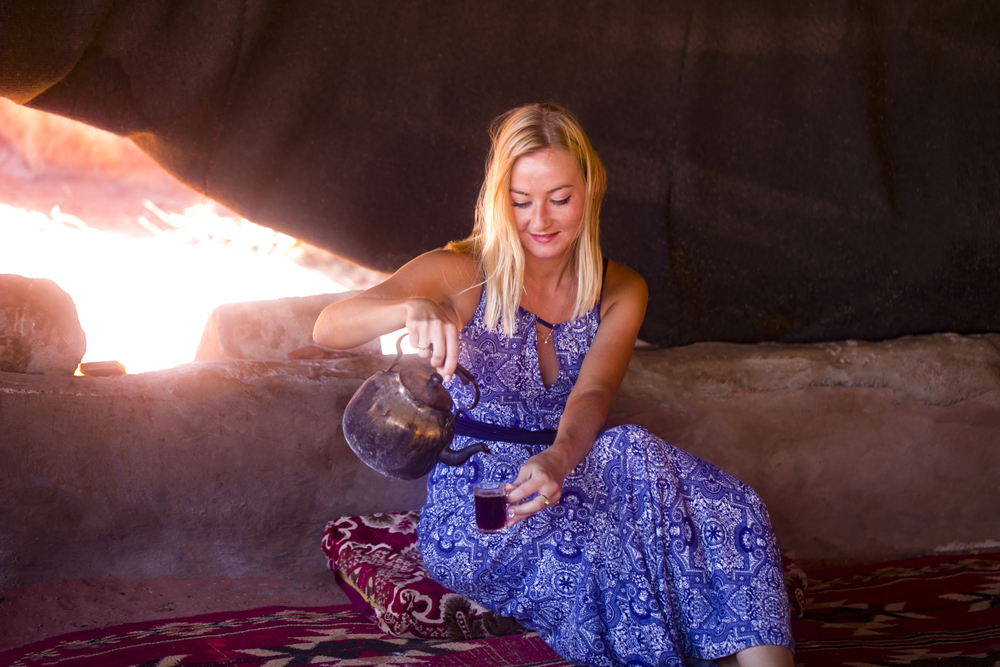 A tourist visiting a Bedouin tent in Jordan
A tourist visiting a Bedouin tent in Jordan
This means adopting modest attire, both for men and women. Women should avoid tight dresses and tops with spaghetti straps - it’s also worth carrying a scarf, which you can use to put over your head, should you wish to visit a holy Muslim site. Men should avoid shorts. Whilst homosexuality is legal, public displays of affection from couples (whatever their orientation) are generally frowned upon.
Moreover, public drunkenness is considered very offensive - in fact, some hotels and restaurants don’t even serve alcohol. And, of course, if you’re visiting Petra during Ramadan, it’s a good idea not to eat or drink publicly, since many of the locals will be fasting from sunrise to sunset.
3. Bring your own food and drink when exploring Petra
Unlike certain sites, you are allowed to bring your own food and drink into Petra, and this really is a good idea. Why?
First of all, you’re going to need plenty of fuel, since it’s easy to rack up thousands of steps here. Secondly, you might end up in remote parts of the site, where there’s absolutely no means of grabbing even a snack, let alone a real lunch. And thirdly, however much water you think you will need, you’ll probably need more.
 Drink more, as much as you can!
Drink more, as much as you can!
Keeping hydrated is imperative - you’ll be tired without food but it won’t affect you in the same way as going without liquids for a few hours - particularly in the scorching summer months.
If you’re staying at a hotel, ask them to give you a doggie bag for breakfast, or pay for them to pack a lunchbox for you. Fill up reusable water bottles before you leave and/or pick up bottles of water at a local supermarket.
Another thing that’s good to carry is small bags of dried fruit and nuts and some energy bars. These are all light but will really keep you going when you’re trekking around. There is a restaurant in Petra - the Basin - which is en route to the Monastery. It’s owned by the Crown Plaza and serves a decent buffet, but if you want to save money, or aren’t in the area, bring what you need with you!
4. Allow at least two days for your visit to Petra
Whilst it’s certainly possible to take a day trip to Petra, and many people do, the fact is that you’ll probably regret not spending more time there, once you’ve left.
This incredible Nabatean city, carved out of red rock and abandoned for hundreds of years, before being stumbled upon in the 19th century by a Swiss explorer, isn’t a UNESCO World Heritage site for nothing. Actually, today it’s regarded as one of the Seven New Wonders of the World, and with good reason. Few visit Petra and don’t come away in awe - and if you only take a day trip, there’s a lot you will miss out on seeing.
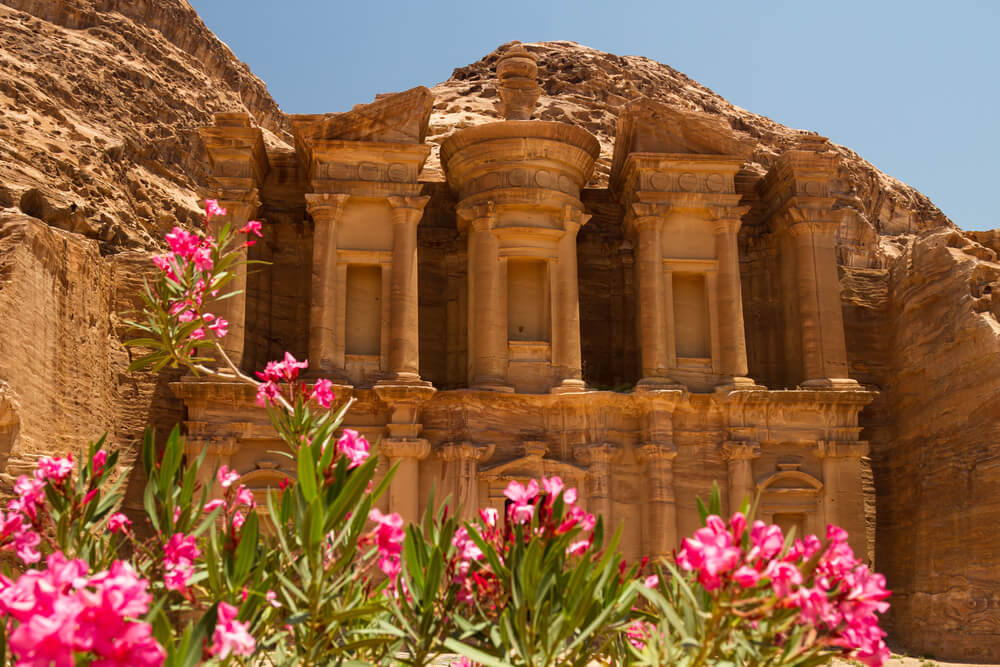 The incredible Petra Monastery; trust me, you won't reach it if you have just one day
The incredible Petra Monastery; trust me, you won't reach it if you have just one day
Moreover, if you stay overnight in Petra, you can rise early and be at the gates when they open (7am). You’ll be one of the first to walk through Siq passageway, catch a glimpse of the Treasury then head off to more far-flung areas, like the Monastery, long before the crowds have arrived.
There’s also ‘Petra by Night’ where - three times each week - the area close to the treasury is lit up by thousands of candles. If you go, you’ll be treated to a traditional Arabic music performance, and get to see this astonishing lost city illuminated by nothing more than flickering lights - and it truly is quite a sight.
It’s possible to buy not just day tickets but two/three day passes to Petra (they aren’t much more costly than the day ticket) and we’d definitely encourage you to - this way, you can take your time and really explore, without having to look at your watch every five minutes.
5. A Guided Tour will upgrade your visit
As much as many travelers like to travel independently, if you’re visiting an archaeological site that has as much history to it as Petra, you really will get more out of it if you are using the services of a local guide.
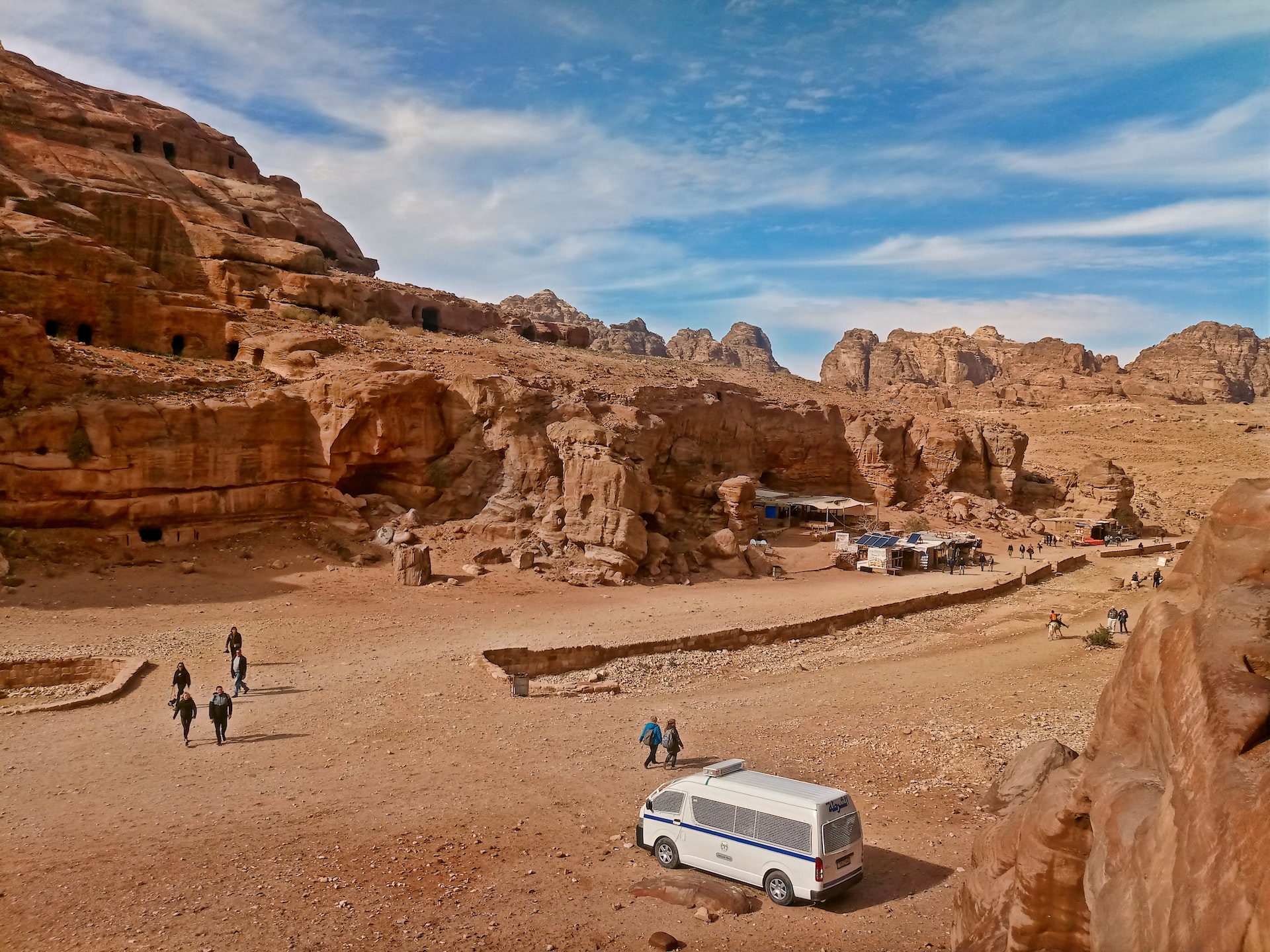 Tourists arriving at the Petra Archeological Park
Tourists arriving at the Petra Archeological Park
Petra is far more than just the Treasury (which is the first - and often only place - that many visitors see), It is an enormous site, with different hiking trails, tombs, facades, and impressive ancient buildings. The guides all have incredible knowledge of the area, and can really bring the history of the Nabteans to life for you. Yes, you can walk around with a map and a book (or phone) but having small details pointed out to you by a pro - well, that’s something else.
Also bear in mind that a local guide will speak the language, know the vendors, and can advise you on what kind of prices to pay for donkey hire, souvenirs, etc. And if you are visiting Petra from Israel, as part of an organized trip, our visa, transport, and accommodation will all be arranged for you - so no hassle whatsoever.
 Login / Register
Login / Register
 Contact Us
Contact Us
 Certificate of Excellence
Certificate of Excellence Guaranteed Departure
Guaranteed Departure Low Prices Guaranteed
Low Prices Guaranteed 24/7 Support
24/7 Support




